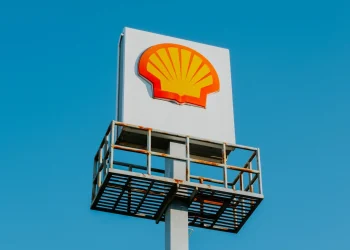In the wake of the COVID-19 pandemic, two of the world’s leading stock indices, the FTSE 100 and the S&P 500, demonstrated contrasting trajectories. Both witnessed substantial drops during the initial outbreak, but their subsequent recoveries exhibited significant differences. The FTSE 100 took nearly two years to regain its pre-pandemic level, while the S&P 500 managed to rebound within half a year. It is important to understand these differences so that we can think about volatility in the future and how the two indices might respond.
Let’s look at the graphs of the FTSE 100 and S&P 500

The FTSE 100 graph over the last 5 years has been volatile, with the index experiencing both periods of growth and periods of decline.
The index reached a peak of 7,788.74 on February 12, 2023, before falling to a low of close to 5000 during the COVID-19 pandemic.
The following are some of the key factors that have influenced the performance of the FTSE 100 over the last 5 years:
The COVID-19 pandemic: The COVID-19 pandemic had a significant impact on the global economy, and the FTSE 100 index was no exception. The index fell by more than 35% from its peak in February 2020 to its low in March 2020.
The UK’s exit from the European Union: The UK’s exit from the European Union, also known as Brexit, has also been a major factor in the performance of the FTSE 100 index. The uncertainty surrounding Brexit has led to volatility in the index, and it is likely to continue to do so in the coming years.
The rise of inflation: Inflation has been on the rise in recent years, and this has also been a factor in the performance of the FTSE 100 index. Inflation has led to higher costs for companies, which has hurt their profits. The inflation crisis is not over so it’s likely to keep impacting stock returns for a while into the future.
Despite the challenges that the FTSE 100 index has faced over the last 5 years, the index has still managed to achieve some growth. The index has increased significantly since its low in March 2020.

Onto the S&P 500, the index has also been volatile over the past 5 years, but clear growth is still present.
The following are some of the key factors that have influenced the performance of the S&P 500 over the last 5 years:
The COVID-19 pandemic: The COVID-19 pandemic had a significant impact on the global economy, and the S&P 500 index was no exception. The index fell by more than 34% from its peak in January 2020 to its low in March 2020.
The US-China trade war: The US-China trade war has also been a significant factor in the performance of the S&P 500 index. The trade war has led to higher costs for companies, which has hurt their profits.
The global economic slowdown: The global economic downturn has also been a factor in the performance of the S&P 500 index. The slowdown has led to lower demand for goods and services, which has hurt the profits of many companies in the S&P 500 index.
The rise of inflation: Inflation has been on the rise in recent years, and this has also been a factor in the performance of the S&P 500 index. Inflation has led to higher costs for companies, which has hurt their profits.
Despite the challenges that the S&P 500 index has faced over the last 5 years, the index has still managed to achieve some growth. The index has increased by more than 10% since its low in March 2020.
Driving Forces Behind the Divergence of the FTSE 100 and S&P 500
Several crucial elements played instrumental roles in shaping these disparate recovery paths. A primary factor is the distinct sectoral makeup of these indices. The FTSE 100 leans heavily towards industries traditionally known as the “old economy,” encompassing sectors like oil and gas, mining, and banking. These sectors were hit hard during the pandemic and hence, the recovery was sluggish.
Conversely, the S&P 500, with its high weighting towards the technology sector, fared better. Tech companies were among the rare winners in the pandemic environment, benefiting from the accelerated digital transformation in several areas of life and work.
The Role of Monetary and Fiscal Policies
The differential response of the respective governments also significantly influenced the performance of these indices. The UK’s fiscal stimulus measures and interest rate cuts trailed behind those implemented in the US. This lag in monetary and fiscal interventions resulted in less immediate support for the UK economy, which reverberated as a more drawn-out recovery for the FTSE 100.
Key Takeaways
The contrasting recovery narratives of the FTSE 100 and the S&P 500 underscore the vital roles played by sector composition and government policy in shaping stock market performance, especially in times of crises. It serves as a pertinent reminder to investors about the diverse factors that can influence market outcomes and the importance of factoring these into their investment strategies.
Please note that the information provided here is meant for informational purposes and should not be considered financial advice. Always conduct thorough research and consider seeking advice from a certified financial advisor before making any investment decisions.
Discover more about successful investment strategies by diving into our previous post on “The Successful Investment Strategy of Norway’s Government Pension Fund.” Explore how this renowned fund has achieved impressive returns and learn valuable insights that can enhance your own investment approach. Uncover the key principles, tactics, and long-term vision that have positioned Norway’s fund as a global success story.







